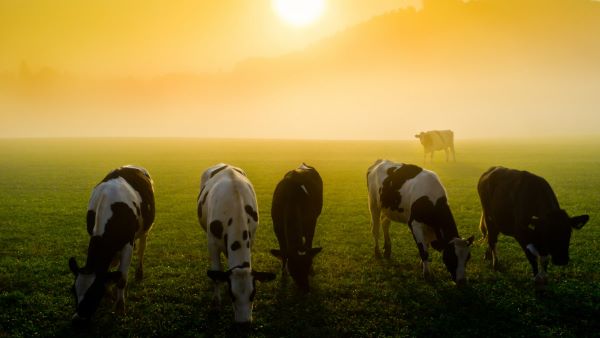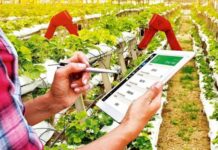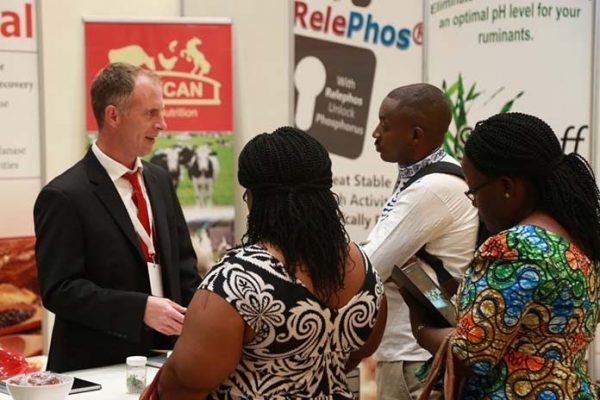Dairy farming and farmers are having to adapt to changing conditions not only at an economic, but also at an environmental, socio-cultural and consumer level. Building resilience at the cow, farm and sector level will be important for future-proofing this important and evolving agri-business sector.
It’s estimated that more than 80 percent of the world’s population regularly consumes liquid milk or other dairy products. Whether from cows, buffaloes, goats, sheep, camels, horses or yaks, dairy-based foods are rich in micronutrients and an important source of affordable protein, energy and fat; and overall consumption is on the rise.
On the flipside of this positive nutrition and growth story are the well-known challenges facing dairy farmers: low milk prices and high feed costs; personnel shortages; changing consumer needs; increased regulation and volatile weather. Farmers must balance these with the need to make some profit, without which they are unable to maintain their herds. As more studies on dairy farming conclude, researchers agree that a combination of improved feeding strategies, better manure management and excellent cow genetics can create a more resilient dairy industry, by reducing greenhouse gas emissions, while increasing milk production with less feed. Supported by the right levels of automation and precision livestock farming (PLF) tools, dairy managers can win back precious time, while leveraging data and insights to improve herd health, performance and overall efficiency.
Feed – getting the right mix
Feed is often the most expensive line item in a dairy operation, that said, it’s not only farmers who are impacting feed strategies today. While grazing still plays a role in many dairy operations, the intensity and increase in herd size has caused a decline in the amount of time cows spend on grass. The trend is reversing however, given increased consumer focus on animal welfare, and as a result, more processors are paying a premium for pasture milk. Well-managed pastures confer additional benefits, given they:
- provide cows with valuable feed and reduce farmers’ costs
- become more resilient to drought or wet conditions when managed properly
- are effective for building up and storing carbon and capturing C02
The South West Dairy Development Centre, in Somerset, UK, is using precision farming tools to demonstrate how grazing and automated feeding, in combination with an automatic milking system, can be realized. Using hyperspectral imaging and satellite data, the center can monitor and predict grass growth in its surrounding paddocks. The herd has access to four fresh areas of grazing per day, which functions via a network of flexible paddocks to encourage flow between the paddocks and the GEA robotic milkers in the barn. The process is managed using GEA herd management software, which communicates between each cow sensor and the segregation gates.
Inside, GEA automated feed technology delivers precisely measured rations multiple times a day, ensuring feed is always fresh, which minimizes waste. Automating this task frees up personnel to do other jobs while minimizing fuel costs; and the compact barn design means a smaller footprint.
Cows, like all ruminants, produce methane (CH4), a form of GHG, as a result of their digestion, which relies on millions of gut microbes to process and ferment the high fiber foods they consume. Despite reductions in herd size, CH4 emissions from cows have increased in many countries; therefore, lowering heat increment in the rumen, which improves overall feed conversion in cattle, is key. The dairy industry and scientific community are studying feed and digestion to find ways of reducing methane production in cattle. A few products, such as methane-reducing feed supplements, are now entering the market, however, researchers continue to explore:
“Achieving substantial net reductions in greenhouse gas emissions from the dairy sector will require action in three broad areas: improving efficiencies, capturing and sequestering carbon and better linking dairy production to the circular, bio-economy.”
Climate Change and the Global Dairy Cattle Sector, Food and Agriculture Organization of the United Nations, 2019
“Given its reputation for quality and durability, GEA manure equipment is often selected by farmers who integrate biodigesters in their operations – whether it’s for moving liquid manure to and from the digester, efficiently agitating pre-and post-digestion or along the entire process.”
Jeramy Sanford, Global Product Manager for Manure Equipment, GEA
- selecting plants and feed mixes that produce less CH4 in the rumen
- training the rumen of calves to produce less methane
- using breeding and genetics to select for cows that consistently produce less CH4
- Achieving substantial net reductions in greenhouse gas emissions from the dairy sector will require action in three broad areas: improving efficiencies, capturing and sequestering carbon and better linking dairy production to the circular, bio-economy.”-
Responsible manure management
In addition to its many positive nutrient benefits for plants and soil – which reduces the need for artificial fertilizers –manure can also be separated into valuable streams, such as grey water, bedding or used to produce energy. However, when improperly managed, manure has negative consequences for soil, water and air quality; in some countries, farmers face increased regulation and steep penalties – and even mandates to reduce herd size. Today, expanding a herd or starting a large dairy operation often requires that owners have a manure management strategy in place before permission is granted.
GEA uses its process knowledge and experience to design and implement tailor-made, high-value manure management solutions that meet operator needs while also fulfilling legal requirements. This includes: the collection and transfer of raw manure; land application; as well as effective separation systems for liquid recycling and bedding production.
In the barn, regular manure collection ensures good hygiene standards, minimizing infection and claw diseases. Using a manure separator, the liquid and solid materials can be separated; the remaining liquid can either be used on fields or in the barn, following further processing, and the solids reused as bedding or sold on. Greater solid removal means less ends up in the manure lagoon, lowering agitation, hauling and dredging costs. By adding a decanter, nutrients can be further isolated; for example, to produce clarified liquid manure, which is largely free of phosphate and can be spread safely on fields as natural fertilizer.
Farmers around the world are looking for ways to optimize their operational nutrient cycle. To this end, more farmers, including GEA customers, are investing in biogas plants with downstream treatment of fermentation residues; this enables them to specifically utilize the electrical power, heat and various fermentation residue fractions generated in this way, both within and outside the farm. To realize the resulting economic advantages, however, dairy farms in most countries will need financial support and access to an infrastructure that enables the production and utilization of biogas. Economies of scale can be achieved by combining various farm residues with, for example, food waste from other farms. As a result, more and more residues can be responsibly managed and local and regional nutrient cycles closed.
Given its reputation for quality and durability, GEA manure equipment is often selected by farmers who integrate biodigesters in their operations – whether it’s for moving liquid manure to and from the digester, efficiently agitating pre-and post-digestion or along the entire process.”- Jeramy Sanford, Global Product Manager for Manure Equipment, GEA
Jeramy Sanford, Global Product Manager for Manure Equipment, GEA
Developing robustness and resilience in dairy cows
Cattle have been selected, bred and crossbred for centuries to improve their performance and resilience in certain landscapes and climates. However, over the last few decades, much of the focus has been on increasing milk productivity. While cattle, like all species, can adapt somewhat to stressors and change, breeding strategies are now being reexamined; additional traits, such as resistance to heat stress, disease or adaptive changes to variations in feed and forage are being looked at more vigorously given they affect productivity and fertility.
Lactation alone increases a cow’s body temperature; therefore, when ambient air temperatures climb even 3 to 4 degrees Celsius above normal, heat-induced complications may also increase, including decreases in fertility and appetite which impact milk productivity. Somatic cell counts and incidences of mastitis also tend to increase during warm periods. Providing herds with good ventilation, sufficient water and even sprinkling systems helps keep cows comfortable and reduces the chances of infection or disease.
There is also a growing discussion and debate about the use of antibiotics today. While many dairy farmers have stopped using them altogether, this can leave cows more susceptible to disease, including mastitis. Here again, genetics and breeding are playing a stronger role given that cows selected for several traits have a lower somatic cell count and thus fewer instances of mastitis. GEA is conducting larger field trials to validate that the amount of antibiotics used during the drying off period can be minimized without causing the onset of mastitis. Earlier trials already suggest that this can be achieved by reducing the amount of milk taken before drying off begins, which in the future can be controlled using GEA herd management software which indicates when milking clusters should be removed.
Reducing costs and improving cow health with precision livestock farming (PLF)
Getting precise insights into cow behavior, activity and overall health is much easier today given PLF technologies. These digital tools help dairy operators manage their herds more effectively, which includes diagnosing and treating cows more quickly, keeping down costs and supporting improved cow health and productivity.
To help farmers keep a closer eye on udder health in their herds, GEA developed the award-winning DairyMilk M6850 cell count sensor, the world’s first real-time system for early detection of mastitis infection in each teat during milking. Easy to install and low maintenance, the sensor can be used with GEA DairyRobot R9500 and the DairyProQ milking systems, resulting in shortened treatment times for cows and increased productivity.
Using sensor-based technology, GEA CowScout tag records cow activity, eating time and rumination, both indoors and outdoors. The data is available via a real-time dashboard which can be set up to send out alerts. This tool allows for the quick identification and treatment of health problems and can also be used to signal insemination times. “To support managers’ goals of monitoring and directing their operations and processes more efficiently, wherever they might be, we’re continually assessing and improving our herd management tools and platforms to further integrate data, while making them easier to use,” assures Dr. Beate Maassen-Francke, Product Manager Farm Management Software, GEA.
Over the last decade, a lot of data has been captured on farms. The next step is leveraging AI and better integrating data to help dairy farmers take even more informed decisions to increase cow welfare and optimize operational efficiency.”-
Dr. Beate Maassen-Francke, Product Manager Farm Management Software, GEA









